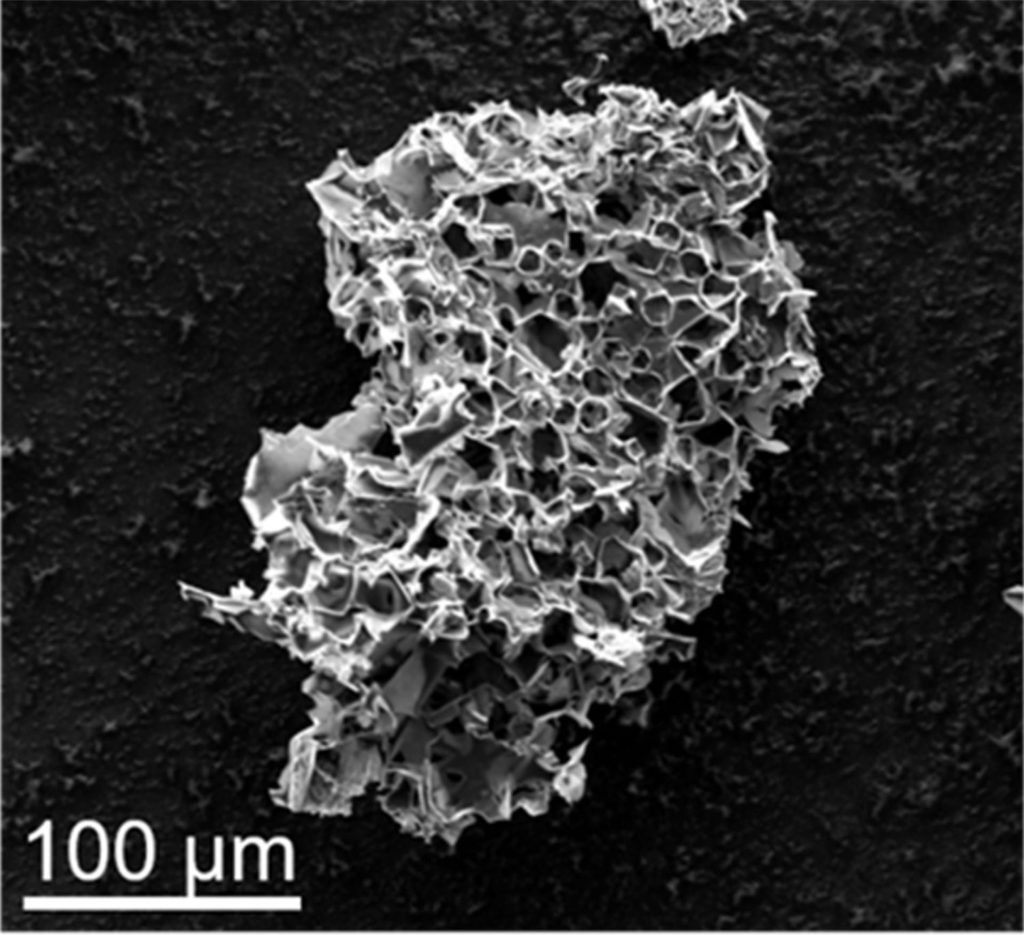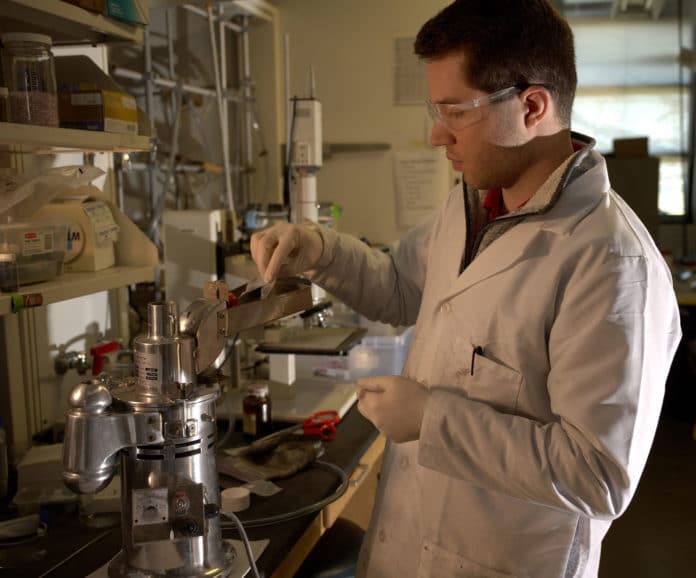Plastic waste and increasing atmospheric carbon dioxide (CO2) levels are among the top environmental concerns presently facing humankind. With an ambitious 2050 zero-CO2 emissions goal, there is a demand for economical CO2 capture routes.
A Rice University team has developed a new chemical technique that turns hard-to-process plastic waste into an effective carbon dioxide (CO2) sorbent for the industry. The technique is a variation of the current pyrolysis-based plastic-recycling process.
To make the material, researchers turned the waste plastic into powder, mixed with potassium acetate, and heated at 600 degrees Celsius (1,112 degrees Fahrenheit) for 45 minutes to optimize the pores, most of which are about 0.7 nanometers wide. Higher temperatures led to wider pores. Heating plastic waste in the presence of potassium acetate produced particles with nanometer-scale pores that trap carbon dioxide molecules.

These porous particles are able to hold up to 18% of their own weight in CO2 at room temperature. Heating it to about 75 degrees Celsius (167 degrees Fahrenheit) releases trapped carbon dioxide from the pores, regenerating about 90% of the material’s binding sites. The sorbent can then be reused.
The trapped CO2 could conceivably be used in the production of products like fuels or building materials. The process also produces a wax byproduct that can be recycled into detergents or lubricants, the researchers said.
While typical chemical recycling doesn’t work for polymer wastes with low fixed carbon content in order to generate CO2 sorbent, including polypropylene and high- and low-density polyethylene, the main constituents in municipal waste, those plastics work especially well for capturing CO2 when treated with potassium acetate.
Researchers estimated the cost of carbon dioxide capture from a point source like post-combustion flue gas would be $21 a ton. This is far less expensive than the energy-intensive, amine-based process in common use to pull carbon dioxide from natural gas feeds, which costs $80-$160 a ton. The sorbent is also expected to have a longer lifetime than liquid amines.
“Point sources of CO2 emissions like power plant exhaust stacks can be fitted with this waste-plastic-derived material to remove enormous amounts of CO2 that would normally fill the atmosphere,” Rice chemist James Tour said. “It is a great way to have one problem, plastic waste, address another problem, CO2 emissions.”
